27 Evidence-Based Health Benefits of Quinoa
What is Quinoa
Perhaps you have heard about quinoa (pronounced KEEN-wah), which is often described as a “superfood,” and are curious about its benefits, which have been recognized in health circles for quite some time now but has only received media attention in just the past few years.
This grain has become popular among health-conscious people for its different benefits, including large amounts of protein, fiber, and various vitamins and minerals.
It is also high in magnesium, iron, B-vitamins, calcium, potassium, phosphorus, vitamin E, and various antioxidants.
It is also gluten-free and recommended for individuals who are on a gluten-free diet.
Once you have tried it yourself and know how beneficial it can be, you will never leave it out of your eating regimen.

History
Quinoa is a grain crop grown primarily for its edible seeds.
This plant is a species of the goosefoot genus (Chenopodium quinoa), which originated in the area surrounding Lake Titicaca in Peru and Bolivia.
The plant dates back 3,000 to 5,000 years BC when it was domesticated by the peoples of America, according to existing historical evidence.
Moreover, archeological evidence exists of quinoa in tombs of Arica in Chile, Tarapacá, Calama, and in different regions of Peru.
Pre-Columbian civilizations cultivated and used quinoa as a staple food in their diet at the time.
The Incas called quinoa the “mother grain.”
An Incan emperor would break ground with a golden implement at the first planting of the season in recognition of what the plant provided them.
Eventually, quinoa was replaced by cereals after the Spanish arrived.
Quinoa was already well developed in technological terms by this time and widely distributed within and beyond the Inca territory.
The first Spaniard to consider cultivating quinoa was Pedro de Valdivia.
He noticed the planted crops around Concepción and realized that the natives used the plant for food.
In his royal commentaries, Garcilaso de la Vega describes quinoa as the second grain cultivated on Earth, somewhat resembling short-grain rice or millet.
He also noted the first shipment of seeds to Europe.
Unfortunately, the seeds were dead on arrival and unable to germinate, possibly due to the high humidity of the sea voyage.
In 1560, Cieza de León reported that quinoa was cultivated in the highlands of Quito and Pasto.
He also mentioned that little maize but an abundance of quinoa was grown on these cold lands.
In 1964, in his chronicles on La Pazmentions, Patiño mentions the use of quinoa as a source of food for the indigenous peoples.

Before it was domesticated, wild quinoa—its leaves and seeds — was probably first used mainly as a source of food.
There is early evidence of its morphology on pottery from the Tiahuanaco culture.
It depicts a quinoa plant with several panicles along the stem, suggesting one of the most primitive strains of the plant.
The genetic variability of quinoa indicates the plant as an oligocentric species with a widely distributed center of origin and multiple diversifications.
The Andean region and the shores of Lake Titicaca in particular present the greatest genetic diversity and variation.
A wide range of morphological changes has affected quinoa during its domestication as a result of human activity.
These include a more compact inflorescence at the tip of the plant, an increase in the size of seed and stem, high levels of pigmentation, and loss of seed dispersal mechanisms.
During domestication, the Andean peoples undoubtedly selected genotypes according to use and tolerance to adverse biotic and abiotic effects.
These have resulted in today’s plants and ecotypes with their different characteristics, such as “Pasankalla” for toasting, “Chullpi” for soups, “Reales” for “pissara” or grains, “Coytos” for flour, “Witullas” and “Achachinos” to resist cold, “Utusaya” to resist salinity, “Quellus” or yellow seed for high yield, “Kcancollas” to resist drought, “Ratuquis” for early growth, and “Ayaras” for nutritional value (high balance of essential amino acids and proteins).

How Quinoa Grows
Although it is a broad leaf plant and does not belong to the same horticultural family as grasses that are grown for grains, such as wheat, barley, and oats, it is nonetheless considered a grain.
It is different from the more traditional grains in that it blooms with lovely purple or red flowers before it goes to seed.
The seeds are used like typical grains to make flour, cereals, soup, and alcohol.

Climate Requirements
To grow your own quinoa, you should be acquainted with the conditions it requires:
- Days to germination:4 to 5
- Days to harvest:90 to 120
- Light requirements: Quinoa requires full sun and short days; length should be optimal.
- Water requirements: To germinate seeds and support seedlings, you should water quinoa regularly, keeping it evenly moist. Once plants are established, you should water occasionally during dry weather, allowing the first few inches of soil to dry between watering.
- Soil: It has to be well drained and fertile with compost added. To inhibit weeds, retain moisture, and regulate soil temperature, you should mulch the top of the soil once seedlings are a few inches tall.
- Temperature: Optimal growing conditions are in cool climates with temperatures ranging from -4°C during the night to 35°C during the day. Quinoa withstands light frosty weather except during flowering, which may cause sterilization of the pollen.
- Container: Container growing is not suitable for quinoa due to the size of the plant.
Sow quinoa seeds directly into the ground right after the last frost in the spring has passed.
The perfect soil temperature for quinoa is 15 degrees Celsius.
Be sure to plant early enough in the season to be certain that harvest is complete before ambient temperatures rise above 30 degrees Celsius.
Higher temperatures hinder quinoa growth and seed development.
In warmer climates, you can sow seeds in late summer or early fall for winter bloom.
Make the soil loose, and then add a layer of compost.
When the seedlings appear, thin to one plant every 10 to 12 inches.
Replant seeds within one week in areas that have not sprouted.
Varieties
People enthusiastic about the plant may have noticed the similarity between quinoa and amaranth.
Both are broad leaf plants whose seeds are used as grains.
Unlike quinoa, however, which is a cool-season plant, amaranth is a warm-season plant.
For that reason, amaranth and quinoa plantings can be made successively for a spring and fall harvest.
Based on information on the seed packets, quinoa is deer resistant.
It is a versatile plant with many uses, including being a striking ornamental flower as well as a food source.
Even the young leaves are edible, which can be eaten either cooked or raw.

Quinoa Plants Growing in the Field
This is what quinoa plants look like growing in the high altitudes of mountainous regions.
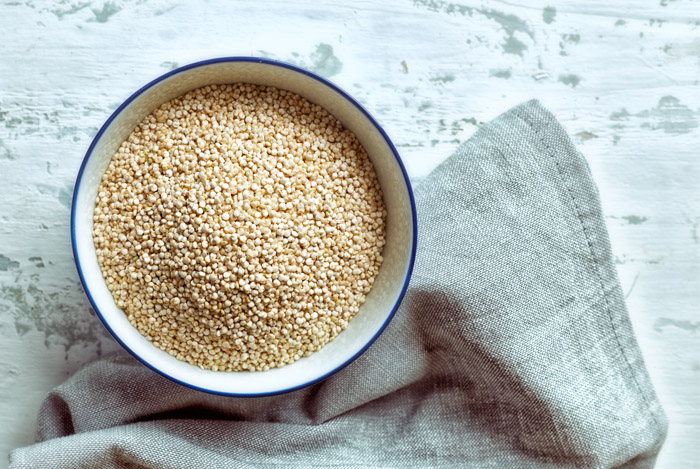
Quinoa or White Quinoa
White quinoa is the most common type available in stores.
You will often see it just called quinoa.
Some also call it ivory quinoa.

Red Quinoa
It is reported that red quinoa holds its shape after cooking a little bit better than white quinoa, which makes it more suitable for such recipes as cold salads, where a distinct grain is particularly desirable.
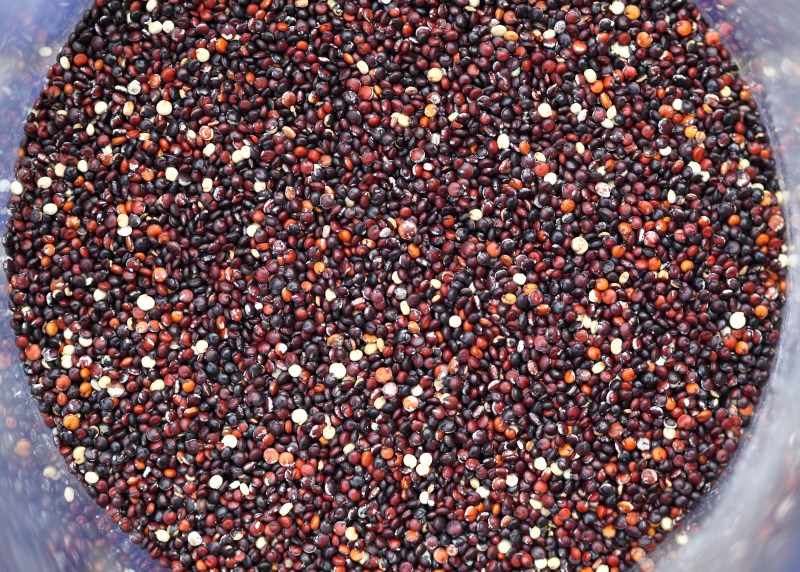
Black Quinoa
A bit sweeter and earthier than white quinoa, black quinoa keeps its striking black color when cooked.
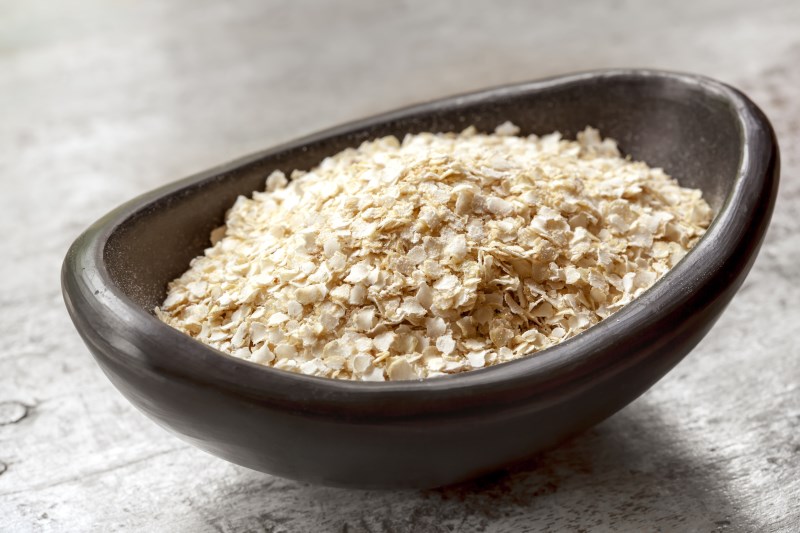
Quinoa Flakes
As with barley flakes or rolled oats, quinoa flakes are created by steamrolling the whole grain kernel.
Less time is needed to cook flaked grains than whole kernels (groats), but since quinoa is already a quick-cooking grain, these flakes serve as a great instant breakfast.
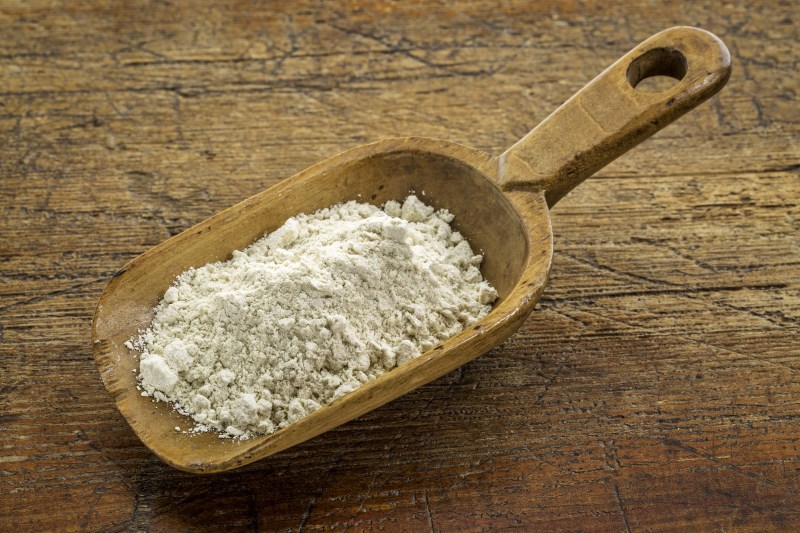
Quinoa Flour
It is hard to distinguish quinoa flour from other flour, but you will have to trust us on this one.
This IS quinoa flour.
Interesting Facts
The International Year of Quinoa may have come to an end, but the reign of quinoa as one of the healthiest foods of all time will undoubtedly continue.
In spite of its growing popularity, most people do not know very much about this ancient grain.
Here are 5 fun facts about this popular superfood.

- Quinoa is not actually a grain at all. We cook and eat quinoa like many other grains, but botanically speaking, it is a relative of spinach, chard, and beets. The part we eat is actually the seed, cooked like rice, which is why quinoa is gluten free. Its leaves are also edible.

- Quinoa is a complete protein. Back in 1955, a study from the authors of “Nutritive Values of Crops, Nutrient Content and Protein Quality of Quinoa” substantiated the nutritional powers of quinoa (1).
- There are more than 100 types of quinoa. There are roughly 120 known kinds of quinoa. The most commercialized kinds are white, black, and red quinoa.
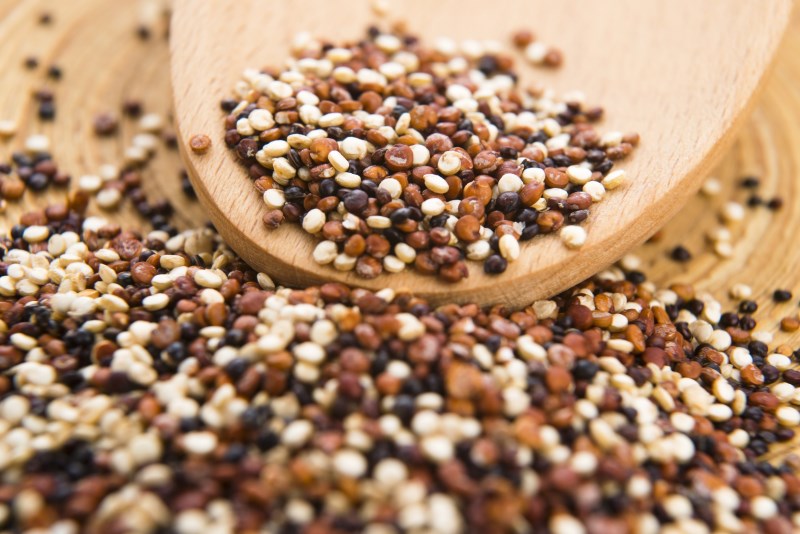
- You should probably rinse your quinoa. If you did not wash them first, dried seeds would taste pretty bitter due to a compound they are coated with, but most modern-day packaged quinoa has been rinsed, i.e., processed. It would probably be a good idea to rinse your quinoa before eating, though, just to be safe.
- What is that string? When you cook your quinoa, you probably notice a curly “tail” coming from the seed. That is actually the germ of the seed, which separates slightly when your quinoa is ready.
Health Benefits Of Quinoa
Quinoa is one of the most popular health foods in the world.
It is gluten-free, rich in protein, and one of the few plant foods containing all 9 essential amino acids.
Quinoa is also high in fiber, magnesium, B-vitamins, potassium, calcium, iron, phosphorus, vitamin E, and various beneficial antioxidants.
Shown below are 27 science-backed health benefits of quinoa, which is also known as the “mother grain,” according to a field crops article by the University of Wisconsin and the University of Minnesota (2).
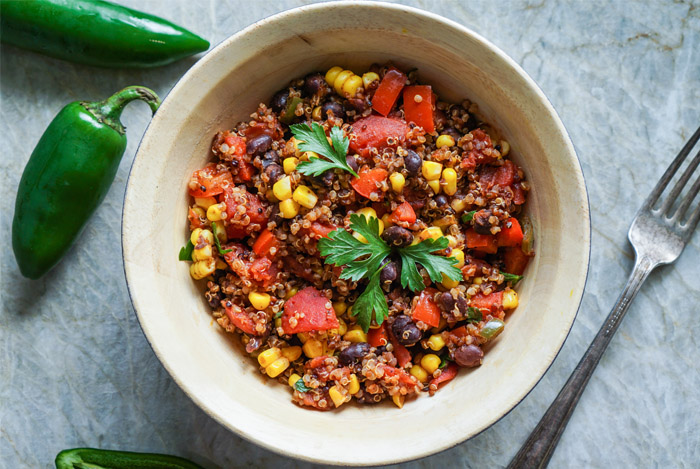
Very Nutritious
Despite popular belief, quinoa is not a cereal grain but rather a pseudo-cereal (3).
In other words, it is basically a “seed” prepared and eaten similar to a grain.
Here is the nutrient content in one cup (185 grams), which also applies to cooked quinoa (4):
- Protein:8 grams
- Fiber:5 grams
- Manganese:58% of the recommended daily allowance
- Magnesium:30% of the recommended daily allowance
- Phosphorus:28% of the recommended daily allowance
- Folate:19% of the recommended daily allowance
- Copper:18% of the recommended daily allowance
- Iron:15% of the recommended daily allowance
- Zinc:13% of the recommended daily allowance
- Potassium:9% of the recommended daily allowance
- Over 10% of the recommended daily allowance in vitamins B1, B2, and B6
- Small amounts of calcium, vitamin E, and B3 (niacin)
All this comes with a total of 222 calories, with 39 grams of carbs and 4 grams of fat.
Quinoa also contains a small amount of omega-3 fatty acids.
According to a 2009 article published in the Journal of the Science of Food and Agriculture, quinoa has been praised for its “unusual composition and exceptional balance” of protein, fat, and oil as well as its vitamins, minerals, antioxidants, and fatty acids, making it a highly nutritious food (5).
The article also indicates that quinoa contains phytohormones, unlike many other plant foods.
Namely, phytohormones aid in regulating plant growth.
Some types known as phytoestrogens are being studied as a treatment for menopause symptoms because they sometimes have the ability to behave like estrogens in the body.
Quinoa is gluten-free, non-GMO, and usually grown organically.
Although technically not a grain, it is still considered a whole-grain food.
NASA scientists have been assessing quinoa as a suitable crop to be grown in outer space, mainly due to its high nutrient content, ease of use, and ease of growing (6).
The year 2013 was actually named “The International Year of Quinoa” by the United Nations because of the plant’s high nutritional value and potential to contribute to food security all around the world (7).
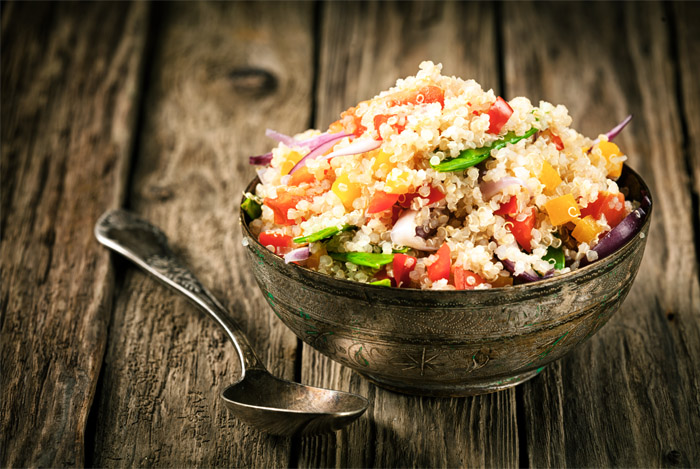
Contains Quercetin and Kaempferol
The health benefits of real foods go way beyond the vitamins and minerals we are all familiar with.
You may find thousands of trace nutrients present, some of which are extremely healthy.
This includes molecules called flavonoids, which are plant antioxidants that have been proven to have many health benefits.
Two flavonoids that deserve to be well studied are quercetin and kaempferol, compounds found in large amounts in quinoa (8).
In fact, quercetin is found in greater amounts in quinoa than in typical high-quercetin foods, such as cranberries (9).
These 2 molecules have been reported to have anti-inflammatory, anticancer, antiviral, and antidepressant effects. (10, 11, 12).
One animal study conducted by the Division of Experimental Obesity, Pennington Biomedical Research Center has concluded that quercetin is effective in reducing circulating markers of inflammation observed in animals (13).
By including quinoa in your diet, you will undoubtedly increase your total intake of these important nutrients as well as other important plant compounds.

Rich in Fiber
Like many grains, quinoa is high in fiber.
Unlike many grains, quinoa is very rich in fiber.
In one study conducted at the University of Valencia in Spain, 4 varieties of quinoa were used to determine the amount of fiber in them.
It resulted in a range of between 10 and 16 grams of fiber per every 100 grams (14).
This is equal to 17–27 grams per cup, an amount which is very high, more than twice as high as most grains.
Much less fiber is found in boiled quinoa, gram for gram because it absorbs so much water.
Unfortunately, most of the fiber in quinoa is insoluble fiber, which is not as beneficial to your health as soluble fiber.
That being said, the soluble fiber content is about 1.5. grams per 100 grams (or 2.5. grams per cup), which is still a decent amount.
Numerous studies have shown that soluble fiber can help lower cholesterol, reduce blood sugar levels, increase fullness, and help with weight loss (15, 16, 17).
In one of these studies, the German Institute of Human Nutrition has found that dietary fiber consumption contributes to a number of unexpected metabolic effects independent from changes in body weight, which include improvement of insulin sensitivity and modulation of the secretion of certain gut hormones (15).
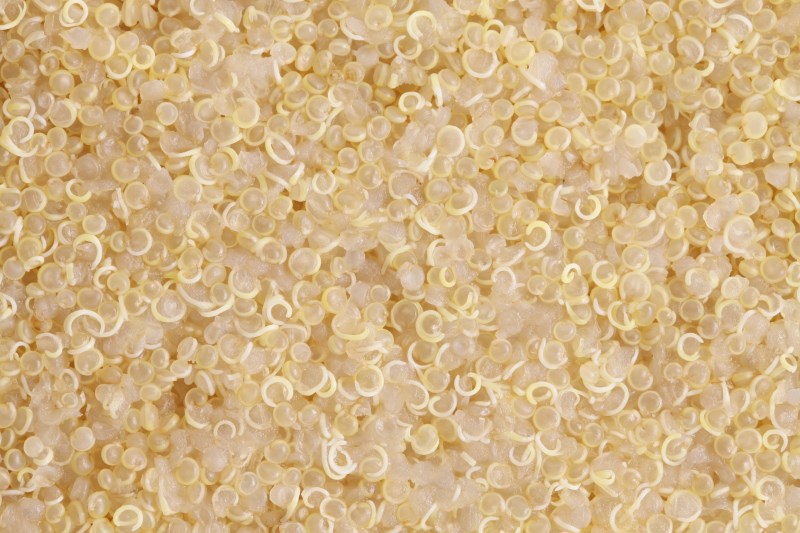
Gluten-Free
Gluten-free diets are recommended for people with celiac disease, a severe gluten intolerance.
Although the benefits of gluten-free diets for people who do not suffer from celiac disease are still being debated, many American have jumped on the bandwagon.
According to a 2013 survey, about one-third of Americans say they want to cut down or be free of gluten in their diet (16).
A gluten-free diet can be healthy as long as it is based on foods that are naturally gluten-free.
It is not recommended that you eat “gluten-free” foods that are actually packed with refined starches instead.
These foods are no better than their counterparts that contain gluten.
Gluten-free junk food is still junk food.
People who are on a gluten-free diet can have a hard time getting all the essential nutrients they need.
According to the Mayo Clinic, gluten-free diets lack the following nutrients: iron, calcium, fiber, riboflavin, thiamin, niacin, and folate (17).
Many researchers, including Toups, a renowned biologist from the faculty of Biology and Medicine at the University of Lausanne in Switzerland, claim that quinoa is a suitable ingredient in gluten-free diets, especially for people who do not want to give up staples, such as loaves of bread and pasta.
She also pointed to a study published in the Journal of Human Nutrition and Dietetics in which researchers at Columbia University’s Celiac Disease Center found that the nutritional profile of gluten-free diets was improved by adding oats or quinoa to meals and snacks (18).
The most notable increases were protein (20.6 grams vs. 11 g), iron (18.4 milligrams vs. 1.4 mg), calcium (182 mg vs. 0 mg), and fiber (12.7 g vs. 5 g).
Toups also stated that in a study in Food Chemistry, researchers suggest that incorporating quinoa or buckwheat into gluten-free products significantly increases their polyphenol content as compared with gluten-free ingredients, such as refined tapioca, corn, potato, and rice flour (19).
Polyphenols are substances that protect cells and body chemicals against damage caused by free radicals.
Products made with quinoa can dramatically increase the nutrient and antioxidant value of the diet compared with both wheat products and the control of gluten-free products.

High and Essential Amino Acids
Protein is made out of amino acids.
Some of these are called “essential” because our body cannot produce them on its own and needs to get them from the diet.
If a food contains all the essential amino acids, it is considered a “complete” protein.
The problem lies in lysine, a certain essential amino acid that is absent in many plant foods.
Quinoa is an exception, however, because it offers all essential amino acids in a healthy balance, including lysine.
According to the Ohio Agricultural Research and Development Center, quinoa is a good source of lysine (20).
Moreover, quinoa and other whole grains also contain 25% more and better protein than refined grains (21).
There are 9 essential amino acids listed by the National Institutes of Health: histidine, isoleucine, leucine, lysine, methionine, phenylalanine, threonine, tryptophan, and valine (22).
Finally, one cup of quinoa contains 8 grams of quality protein, which makes it an excellent plant-based protein source for vegetarians and vegans.

Has a Low Glycemic Index
The glycemic index is used to measure how quickly foods raise blood sugar levels.
Foods that are high on the glycemic index are known to fluctuate blood sugar levels, stimulate hunger, and contribute to obesity (23, 24).
Such foods have also been associated with many of the chronic Western diseases that are so common today, such as heart disease and type 2 diabetes (25).
Quinoa has a glycemic index of 53, which is under the 55 required to be considered a food that helps stabilize your blood sugar levels.
For that reason, if you are trying to avoid getting diabetes, you can combine quinoa with any other food that is also low on the glycemic index scale.
This will help you nourish yourself without having to worry about spiking your blood sugar levels.
It is important to keep in mind, however, that quinoa still contains a high amount of carbohydrates.
In case you are on a low-carb diet, you may want to avoid eating quinoa.
A ranking of 53 is considered high for such diets as the Paleo diet, so it is all a matter of perspective and your particular end goal.
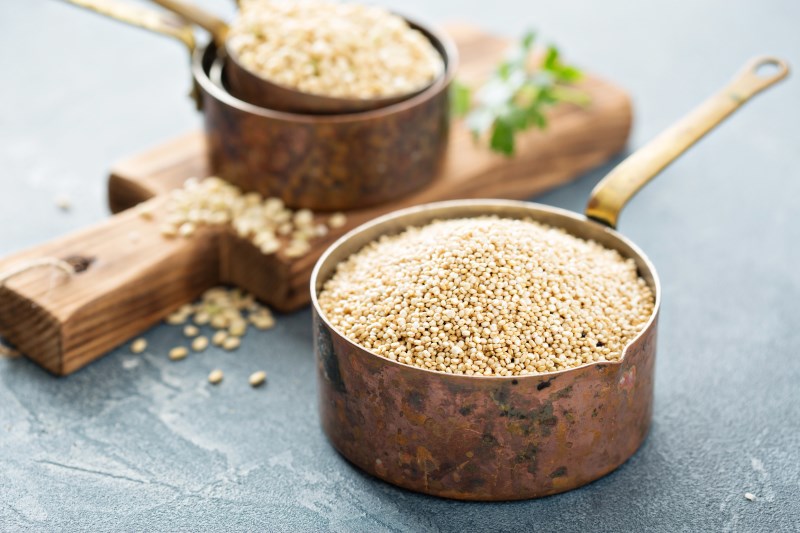
Rich In Magnesium
People often lack many needed nutrients because of their dietary habits.
This is especially true for some minerals, particularly magnesium.
Fortunately, quinoa is packed with this important mineral, with just one cup having about 30% of the RDA.
Our body needs magnesium because it helps the body prevent such diseases as osteoporosis and heart disease while helping balance blood pressure (26).
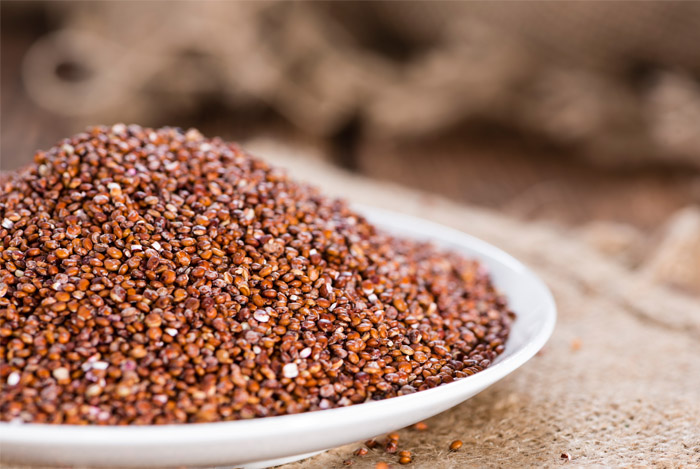
Prevents Osteoporosis
Due to its high magnesium content, quinoa can be very effective in preventing magnesium deficiency and the diseases that go along with it.
The Department of Biomedical, Surgical, and Dental Sciences, University of Milan published online research where they found that optimizing magnesium intake might prevent osteoporosis in individuals with documented magnesium deficiency (26).
The major cause of magnesium deficiency is mainly due to Western dietary practices, which are rich in processed foods and relatively poor in micro-nutrients.

Prevents Cardiovascular Disease
Coronary disease is one of the most common diseases today.
Thanks to quinoa and other grains rich in magnesium, heart disease can be prevented, according to scientific evidence.
Namely, regarding current opinion concerning lipidology, magnesium can be important for preventing cardiovascular disease as well as insulin sensitivity and diabetes (27).
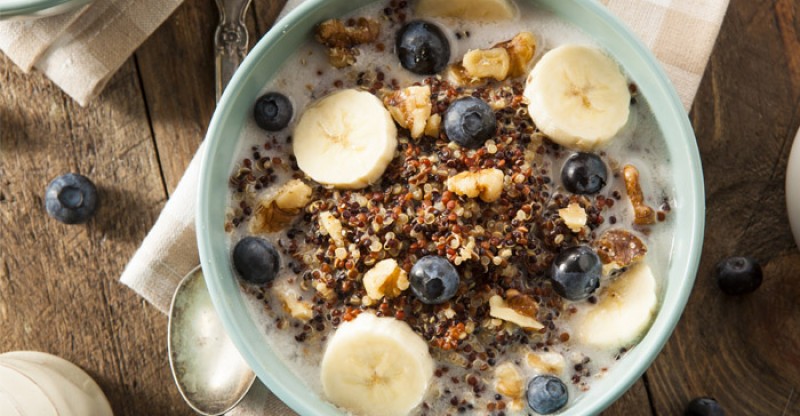
Rich In Iron
Quinoa also helps people who have trouble maintaining their iron needs.
It is also a tastier option than taking an iron supplement.
In just one cup, you are getting 15% of the RDA, which is a substantial boost to your system, and may also assist you with any deficiencies.
Iron is essential for brain function and your muscles as well as for preventing anemia (28).
Since quinoa also contains a substance called phytic acid, a problem arises when this substance binds these minerals and reduces their absorption (29).
Fortunately, you can reduce the phytic acid content and make these minerals more bioavailable by soaking and/or sprouting the quinoa before cooking it.
Quinoa is also pretty rich in oxalates, which reduce the absorption of calcium and can lead to problems for certain individuals with recurring kidney stones (30, 31).
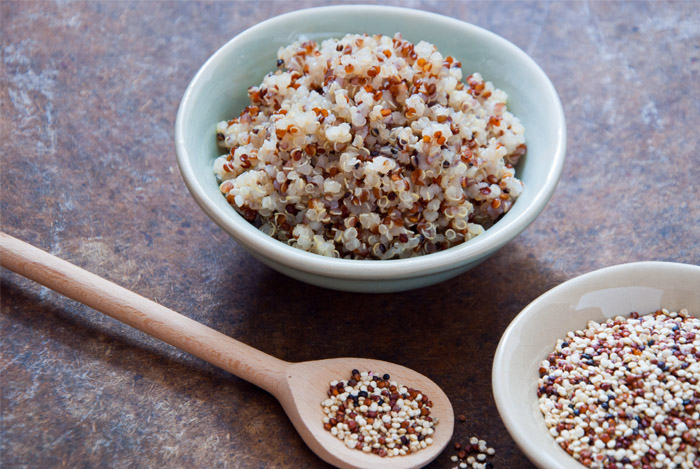
Supports Muscle Metabolism
Your muscles not only need protein to properly function and grow but also require other nutrients, such as iron, that also help maintain healthy muscle metabolism.
In 2001, the Journal of Nutrition published a study claiming that iron deficiency causes negative physiological, biochemical, and neurological outcomes (33).
This review also indicated that iron is the basis for alterations in the immune system, neural systems, and energy metabolism and exercise

Rich in Zinc
Zinc is called an “essential trace element” because very small amounts of zinc are necessary for human health.
One cup of quinoa contains 13% of the RDA, which makes it one of the best sources of zinc.
Zinc is used for treatment and prevention of zinc deficiency and its consequences, including how it affects the skin and liver disease (34).
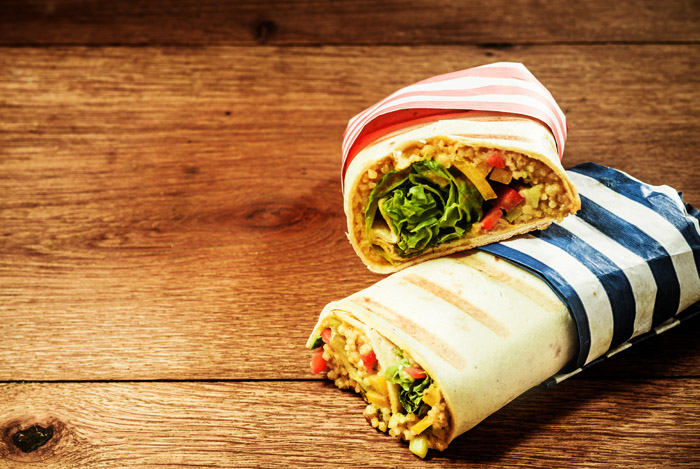
Important Antioxidant for the Skin
Antioxidants are especially important in keeping skin healthy.
The antioxidant benefits of vitamins C and E are well known, but the importance of the trace mineral zinc has been overlooked.
The International Journal of Dermatology found that zinc has the supporting antioxidant role in protecting against free radical-induced oxidative damage.
Zinc protects against UV radiation and enhances wound healing (35).
The study concluded that topical zinc ions may provide an important and helpful antioxidant defense for the skin.
In addition, it contributes to immune and neuropsychiatric functions and decreases the relative risk of cancer and cardiovascular disease (35).

Protects the Liver
Another health benefit supported by quinoa relates to proper liver function.
In this process, zinc is essential because it provides normal cell growth, development, and differentiation.
Moreover, zinc deficiency has been observed in patients with liver disease, including alcoholic liver disease and viral liver disease, according to the official publication of the American Society for Parenteral and Enteral Nutrition (36).
It has also been noted that patients who take a recommended dose of zinc for the treatment of liver disease make significant progress toward curing the disease.
The dose of zinc used for treating liver disease is usually 50 mg of elemental zinc taken with a meal to decrease the potential side effect of nausea.
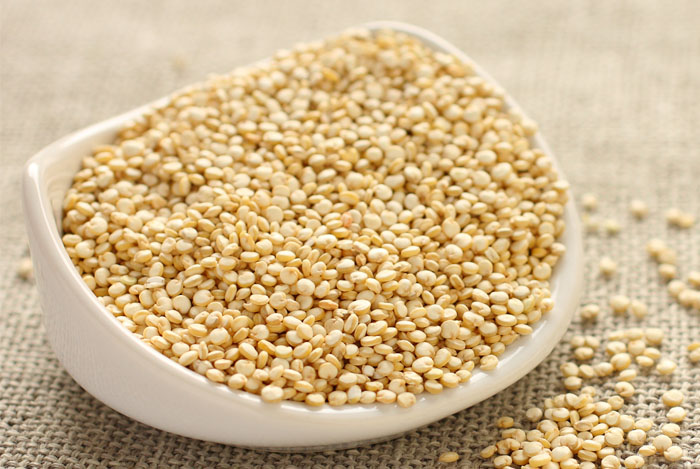
Packed with Potassium
Until recently, humans consumed a high-potassium diet, but with the increasing consumption of processed food, which lacks potassium on a great scale, combined with a reduction in the consumption of fruits and vegetables, a significant decrease in potassium intake has resulted.
In most developed countries, many people suffer from potassium deficiency.
Fortunately, with the increasing popularity of quinoa, potassium can once again become a staple of the Western diet.
One cup of quinoa contains 9% of the recommended daily allowance.
Increasing potassium intake has been linked with beneficial effects on human health, according to scientific evidence.
Epidemiological and clinical studies show that a high-potassium diet lowers blood pressure in individuals with raised blood pressure (37).
Increased potassium intake is important for managing hypercalciuria and kidney stones and is likely to decrease the risk of osteoporosis (37).
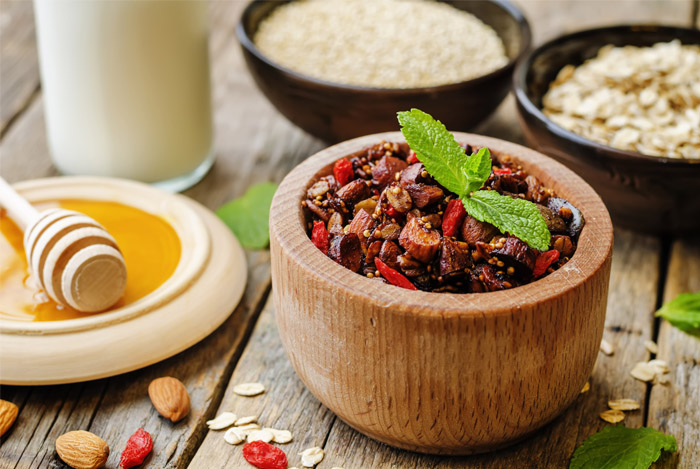
Prevents Kidney Stones
Quinoa is also beneficial for managing potassium content.
Potassium activity has been shown to inhibit uric acid stone formation, according to a study conducted in Italy in 2009 (38).
The aim of this study was to evaluate the efficacy of therapy with potassium citrate/potassium bicarbonate for the dissolution of kidney stones.
Eight patients with radiolucent stones were enrolled.
They were selected to confirm the efficacy of potassium alkali on the treatment of stone dissolution.
The results remained unchanged in all patients during the first period of the treatment, but after 6 weeks of potassium citrate/bicarbonate treatment, 3 had complete stone dissolution.

Beneficial Effects on Metabolic Health
It makes sense that quinoa could improve metabolic health, given the high amount of beneficial nutrients.
Although this thesis needs further and thorough research, at least 2 studies have examined quinoa’s effects on metabolic health.
The first study was conducted on humans and used quinoa instead of typical gluten-free pieces of bread and kinds of pasta.
Researchers from the Department of Food Science & Microbiology at the University of Milan found that quinoa significantly reduces blood sugar, insulin, and triglyceride levels (39).
On the other hand, another study conducted by the Department of Food Chemistry and Nutrition in Krakow, Poland, involved rats and found that quinoa has many advantageous biochemical effects, including completely inhibiting the negative effects of fructose (40).
So, the next time your diet is high in fructose, keep in mind that quinoa might help you.

High in Antioxidants
Quinoa is also a grain that is very high in antioxidants, which are substances that neutralize free radicals and are also believed to help fight aging and many diseases.
At the Department of Nutrition, the University of São Paulo in Brazil, a study was conducted to show which food had the highest antioxidant content.
The study included 5 portions of cereal, 3 pseudo-cereals, and 2 legumes. Quinoa had the highest antioxidant content of all 10 (41).
What’s more, compared with other cereals, such as amaranth, quinoa is pretty high in such antioxidants as polyphenols, phenolics, and anthocyanins.
Their antioxidant activity protects the kidneys, heart, pancreas, and lungs from oxidative stress.
Allowing the seeds to sprout seems to increase the total antioxidant capacity, total phenolic content, and anthocyanins content (42).

Supports Weight Loss
To lose weight, we have to take in fewer calories than we burn.
It is well known that certain foods can promote this process, either by boosting metabolism or reducing appetite.
Interestingly, if you are on a diet, you will probably be allowed to eat quinoa because it has several such properties.
It is rich in protein, which can both increase metabolism and reduce appetite significantly (43).
Quinoa is also high in fiber, which should help you increase the feeling of satiety, making you eat fewer calories overall (44).
The aforementioned fact that quinoa has a low glycemic index is another important feature for losing weight.
Choosing such foods has been associated with reduced calorie intake (45).
Even though there is currently no study that supports the effects of quinoa on body weight, it seems logical that it could be useful in a healthy weight loss diet.
Consuming quinoa will give a one-two punch to your weight loss goals due to its high protein content and great fiber levels as well as other vitamins and minerals it contains.
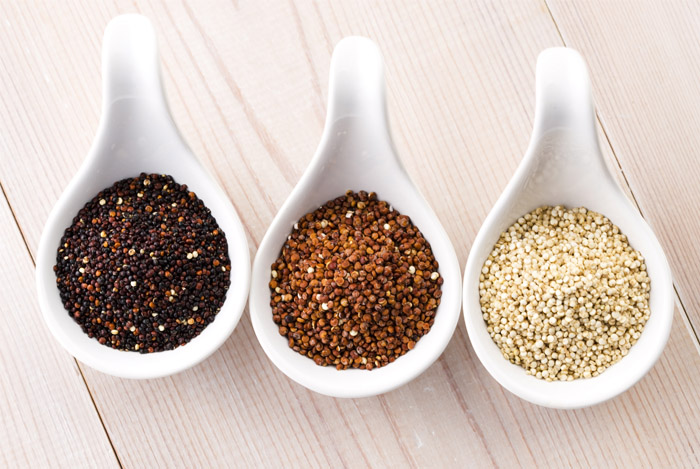
Anti-Inflammatory Properties
Scientists are still conducting research to understand all the implications of chronic inflammation on the body’s health.
Autoimmune disorders influenced by chronic inflammation are lupus and rheumatoid arthritis, inflammatory bowel disease, asthma, and Chronic Disease.
Quinoa and other whole grains may help decrease the risk of inflammation.
They help promote healthy gut microbes, which are essential for preventing inflammation, obesity, and metabolic disease (46).
Quinoa is known to contain many anti-inflammatory nutrients, including saponins.
A 2014 study conducted at the Chinese Academy of Agricultural Sciences, Beijing, showed that saponins in quinoa may be used as functional food components for preventing and treating inflammation (47).
Moreover, flavonoids in quinoa are also known to have anti-inflammatory properties (48).
Other quinoa nutrients, such as cell wall polysaccharides, phenolic acids, and vitamin E family nutrients, e.g., gamma-tocopherol, are also reported to have anti-inflammatory properties (49).
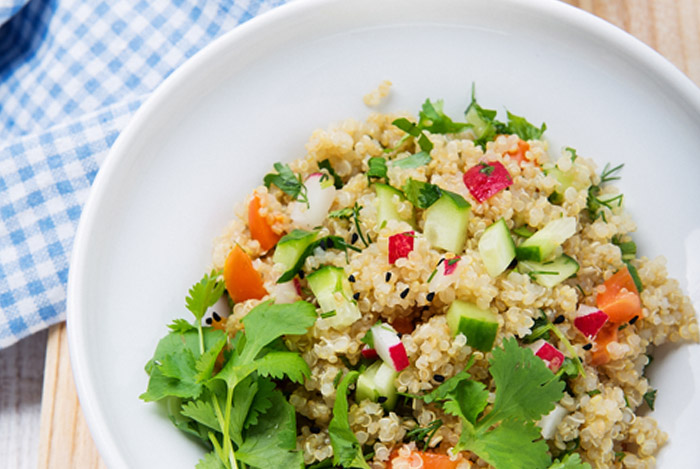
Lowers Cholesterol
Quinoa’s high fiber content can help lower cholesterol levels.
Fiber stimulates digestion, which requires bile acids that are made partly with cholesterol.
As your digestion improves, the liver pulls cholesterol from the blood to produce more bile acid, thereby reducing the amount of LDL cholesterol (the bad cholesterol).
In a 2010 study published in the journal Plant Foods for Human Nutrition, it was found that rats that had consumed a high level of fructose and were then fed quinoa reduced their LDL cholesterol level by 57% (50).
A more recent study published in the American Journal of Clinical Nutrition in 2014 found that patients who took quinoa had lower non-HDL cholesterol levels than those who took cholesterol-lowering medications called statins (51).
Those who ate more than 16 g of whole grains drastically reduced their non-HDL cholesterol levels more than those who only took statins and did not eat whole grains at all.
Also, there is a correlation between whole-grain intake and statins and healthier total cholesterol ratios.
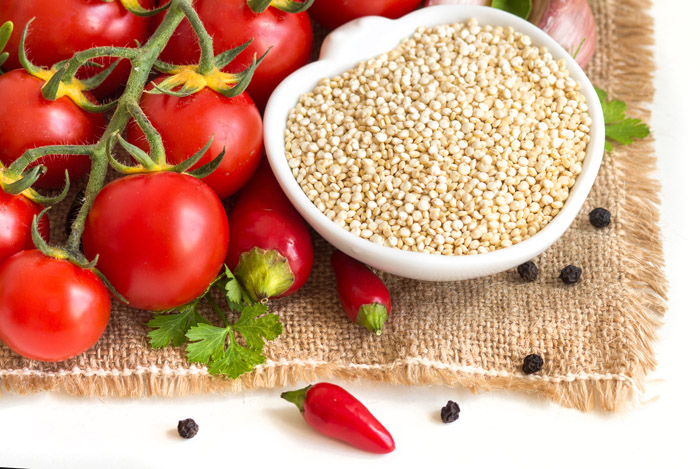
Prevents Anemia
Quinoa is also rich in iron, making it one of the best sources of this mineral.
If you are deficient in iron, you may suffer from anemia, a condition in which there is a deficiency of red cells or of hemoglobin in the blood, resulting in pallor and weariness.
According to the official publication of the American Society for Parenteral and Enteral Nutrition, iron deficiency anemia is still considered the most common nutrition deficiency worldwide (32).
In the study, for adults, iron deficiency anemia can result in a wide variety of negative outcomes, including diminished exercise or work capacity, immune dysfunction, GI disturbances, impaired thermoregulation, and neurocognitive impairment.

Improves Heart Health
Not only can quinoa lower your LDL cholesterol, but it can also benefit your heart in other ways.
A study published in the Journal of Food Lipids reported that quinoa seeds contain many of the dietary flavonoids shown to inversely correlate with mortality from heart disease (52).
In addition, quinoa can provide heart-healthy monounsaturated fat through its oleic acid content as well as alpha-linolenic acids and omega-3 fatty acids.
Most foods lose their content of healthy fatty acids when oxidized, but quinoa’s nutrients hold up to boiling, steaming, and simmering.
Another study published in the European Journal of Nutrition in 2004 found additional evidence for quinoa’s cardiovascular benefits.
In this study, Italian researchers found that quinoa produced lower levels of free fatty acid content and triglyceride concentrations, which are associated with a reduced risk of heart disease, than other bread and gluten-free kinds of pasta studied (29).

Improves Digestion
Digestive disorders affect millions of people.
These can be minor problems, such as diarrhea, constipation, or gallstones, or more serious diseases, such as ulcers, diverticulitis, and cancer.
Quinoa is a great source of insoluble fiber and soluble fiber, which improve digestion.
It helps with bowel movements and bulky and soft stools.
The high content of insoluble fiber in quinoa can help digestive disorders, such as hemorrhoids or diverticulosis.
On the other hand, the soluble fiber content can also help rid the intestines of cholesterol and help with weight management if you have been eating too frequently and suffering from digestive problems.
Gluten-rich foods can affect the small intestines of patients with celiac disease.
Since quinoa is gluten-free, it can prevent digestive disorders in those with gluten intolerance.
One cup of cooked quinoa contains 21% of the RDA of fiber.
A study in the British Journal of Nutrition found that participants reported feeling more satiated after eating quinoa, oats, or buckwheat than after eating rice or wheat (53).
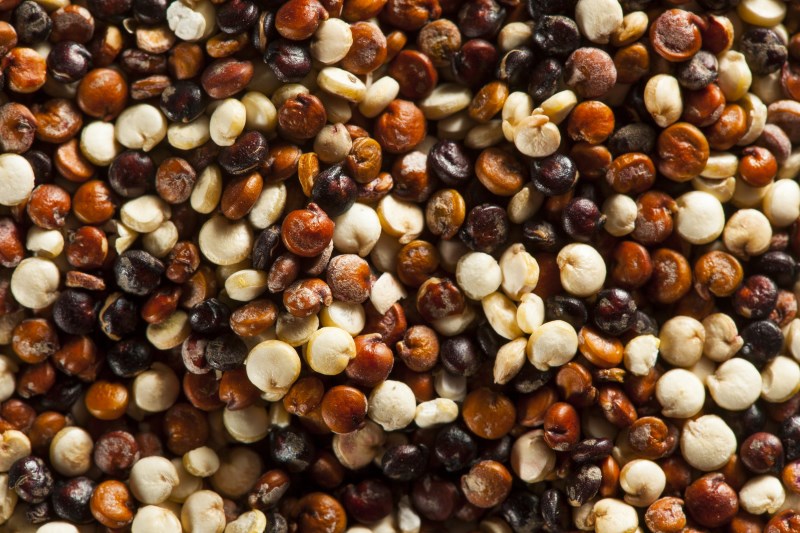
Reduces Risk of Diabetes and Hypertension
The health benefits of quinoa for diabetes are numerous.
A study published in Plant Foods for Human Nutrition in 2010 found that quinoa helped reduce blood sugar levels, total cholesterol levels, and triglyceride levels in rats fed on a high-fructose diet (54).
Quinoa is good for weight loss.
Since the major cause of type 2 diabetes is obesity, quinoa can help diabetic patients.
The British Journal of Nutrition published a 2005 study showing that the consumption of alternative crop formulations, including quinoa, may be exploited for their potential impact on eating behavior (55).
This means it helps regulate blood cholesterol and blood glucose levels, which is very critical for those with diabetes.
Another study published in the Journal of Medicinal Food researched quinoa’s role in diabetes management and hypertension along with 10 traditional Peruvian grains and legumes.
Researchers found that quinoa was especially rich in an antioxidant called quercetin, and that quinoa had the highest overall antioxidant activity (86%) of all 10 foods studied (31).

Promotes Longevity
According to certain scientists, the fiber content in quinoa could actually help people live longer.
A meta-analysis published in the American Journal of Epidemiology found that high dietary fiber intake may help people live longer (56).
Two additional recent studies have associated whole-grain consumption with longevity.
A large-scale study published in BioMed Central in 2015 found that consuming whole grains and cereal fiber is inversely associated with reduced total and cause-specific mortality (57).
Additionally, whole-grain consumption inhibited death from such chronic diseases as cardiovascular disease, cancer, and diabetes.
Another study published in JAMA Internal Medicine found that whole-grain consumption was linked with a reduced risk of cardiovascular disease in American men and women, independent of other dietary and lifestyle factors (58).
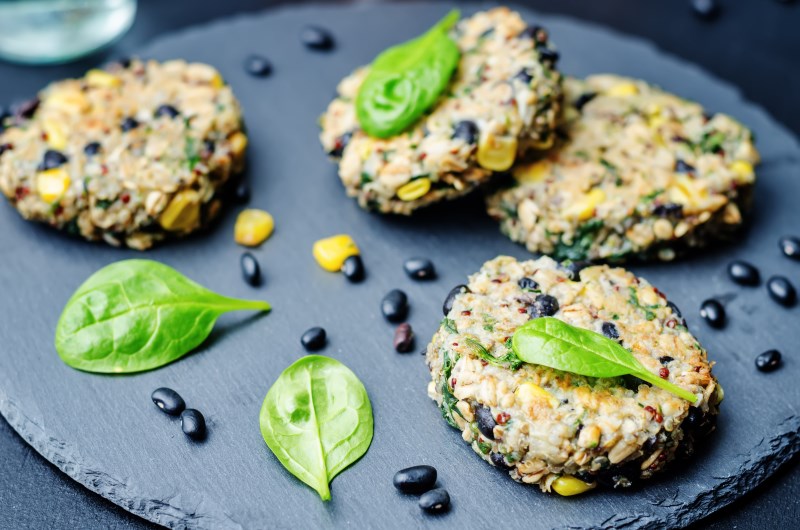
Antiseptic Properties
Even the Incas knew about quinoa’s antiseptic properties. They used quinoa to treat injuries.
During the processing of quinoa, saponin is removed and then reused.
In South America, quinoa’s saponins have many uses, including as a detergent for clothing and washing and as an antiseptic for skin injuries (59).
The effects are antimicrobial.
In addition, saponins are used to help treat an irritated or sensitive scalp.
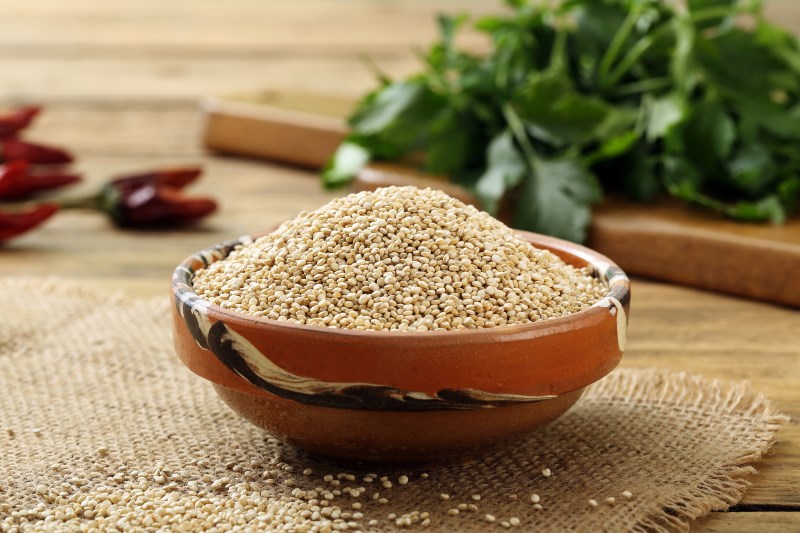
How to Buy and Store
Quinoa is available in most mainstream groceries in the United States and online stores, such as Amazon.com.
In the United Kingdom, quinoa can be purchased in such supermarkets as Tesco, Sainsbury’s, and Morrisons.
Certain stores carry some brands and not others.
Catalog shopping is a good way to buy quinoa, but consider postage costs, which could sometimes hike the price.
Before buying quinoa, visit a few supermarkets and buy a boxed variety of a popular brand.
This will give cooking instructions to those who are unaware of how to use the product.
Once you get comfortable cooking with quinoa, you can also check bulk food grain bins found in most health food stores.
In case bulk quinoa is available, you may want to choose that because it is cheaper than buying packaged quinoa.
Some warehouses carry discounted quinoa in large bags that is inexpensive.
If a Hispanic grocery store is nearby, you can try them for quinoa grains as well.
Boxed quinoa is expensive.
When buying, you should also keep in mind that quinoa expands when cooked, so you may not need a lot.
Depending on your taste and preference, you may want to acquaint yourself with the varieties of quinoa.
The most commonly cultivated and commonly purchased varieties are white, red, and black quinoa.
White quinoa, or ivory quinoa in general, is the most common type available in stores.
Red quinoa is a beautiful fiery shade that adds a great touch to dishes.
It holds its shape a little better after cooking, making it a good option for cold salads.
Black quinoa is a distinct mixture of black, red, and brown-shaded grains that is sure to stand out in any dish.
Black quinoa has a slightly earthier and sweeter taste than other varieties.
Quinoa flakes are also on the market.
They cook faster than the whole-grain variety, making it a fast and great hot breakfast cereal.
Quinoa flour is a perfect wheat-free flour option for many recipes.
For storing, you should place quinoa in an airtight container in a cool place and with a constant temperature, which will extend its shelf life for months.
Once prepared, you should keep your quinoa refrigerated in an airtight container.
This will further prevent spoiling, keep out moisture and other contaminants, and give it an even longer shelf life of up to 6 months.
Make sure not to leave cooked quinoa to sit out at room temperature for longer than 2 hours, just as with any other food.
For a long-term option, you can freeze your dry quinoa while preserving its taste in case you are using an oxygen-free, freezer-safe container.
Cooked quinoa can also be frozen well in an airtight freezer container.
Some of the benefits of proper food storage include eating healthier, helping the environment by avoiding waste, and cutting food costs.
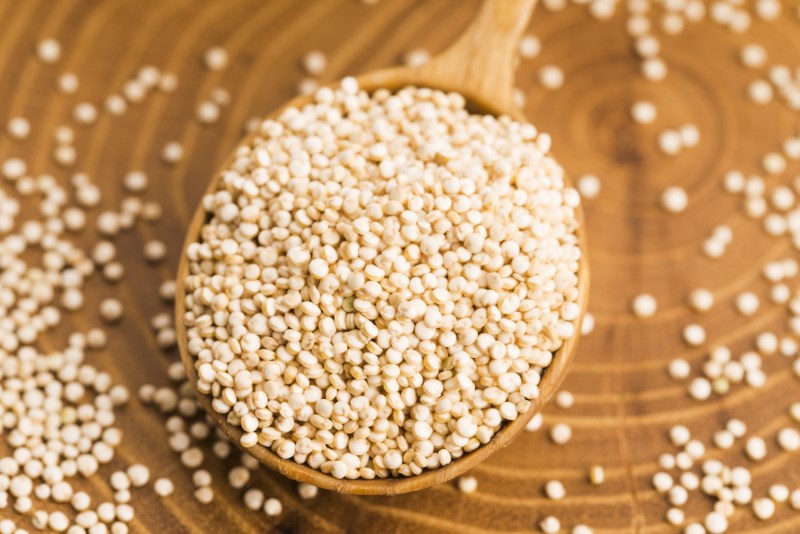
What to Avoid When Buying Quinoa
When you buy quinoa, avoid unwashed varieties.
Prewashed quinoa is available, which is safer and easier to cook.
Raw quinoa grains are coated with saponins that are mildly toxic and bitter.
It is important to wash the grains yourself to rid them of any saponins even if the label claims it is prewashed.
Be mindful when buying quinoa in bulk because sometimes the suppliers do not sort it properly, and it can contain tiny rocks mixed with the grains, which can damage your teeth.
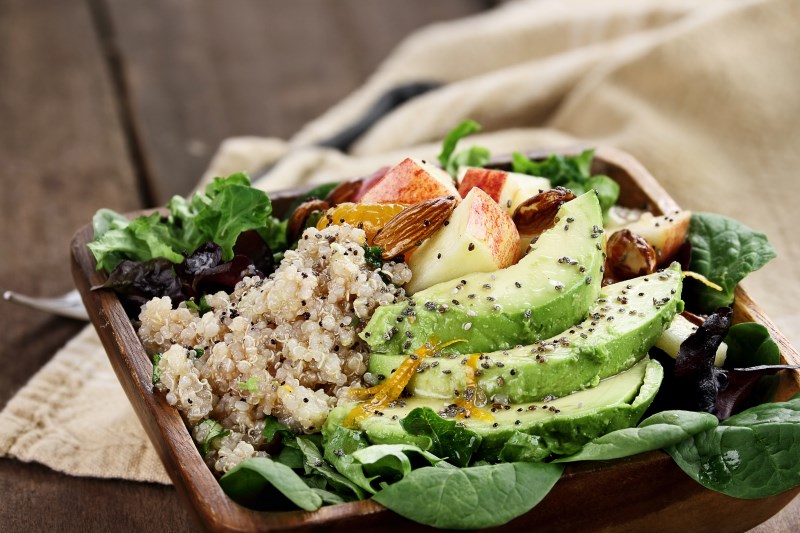
How to Incorporate Quinoa More Into Your Diet
Quinoa is naturally bitter because of its coating substances called saponins that keep insects away without having to use pesticides.
It is really easy to incorporate quinoa into your diet.
Just use it in place of rice in any recipe.
You need to cook its small grains, which become tender in as little as 15 minutes.
Quinoa has a subtle nutty taste, which makes it a versatile ingredient in the kitchen.
Unlike some grains that tend to dry out when cooled, quinoa keeps its pleasant, chewy texture when served warm, chilled, or at room temperature.
You can use it in baking or as a breakfast grain as well in cold salads, hot side dishes, or even in burgers.
You can also use quinoa to thicken soups or stews.
Quinoa flour can be used in gluten-free baking.
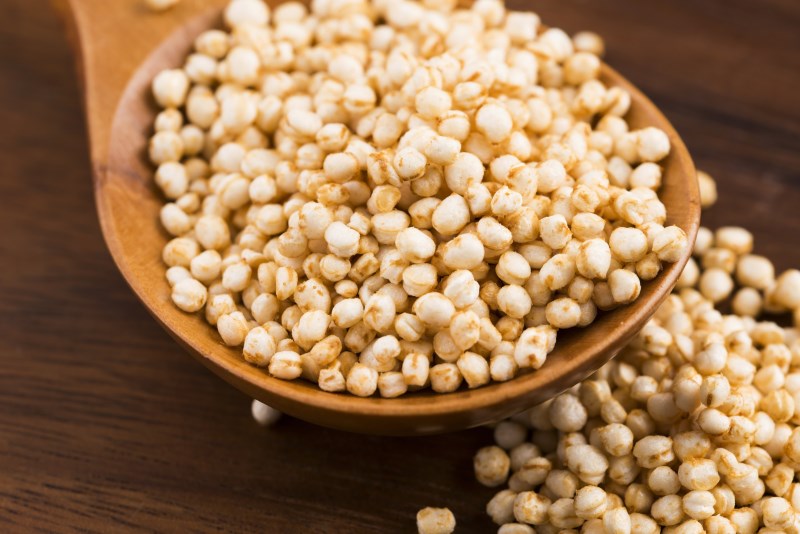
Precautions
Eating quinoa does have several health risks.
Quinoa seeds are coated with saponins, chemicals that help protect plants from diseases caused by bacteria, viruses, and fungi, according to the Environmental Protection Agency (50).
For some people, saponins can do more than just leave a bad taste in the mouth.
They can lead to stomach irritation and possibly damage the small intestine, according to the horticultural department at Purdue University (51).
Also, quinoa’s high fiber content may cause an upset stomach.
You should not consume quinoa during pregnancy or breastfeeding stages because no scientific evidence suggests that you do so.
You should consult a doctor before consuming quinoa with other medicines due to its antioxidant properties.
Moreover, quinoa can also lower triglyceride levels.
For that reason, it is recommended not to consume quinoa if you are taking triglyceride-lowering drugs.
Conclusion
As you can see, it just makes nutritional sense to start eating more quinoa.
You will feel better, have more energy, and potentially lose weight.
Quite frankly, such foods as noodles and rice just cannot measure up as a side dish for all sorts of foods.
Plus, you will be getting a broader nutritional set from quinoa than you would from other foods.
It is not as hard to prepare as you might think.
We have also provided a few simple recipes, so you can start tonight!
FDA Compliance
The information on this website has not been evaluated by the Food & Drug Administration or any other medical body. We do not aim to diagnose, treat, cure or prevent any illness or disease. Information is shared for educational purposes only. You must consult your doctor before acting on any content on this website, especially if you are pregnant, nursing, taking medication, or have a medical condition.
HOW WOULD YOU RATE THIS ARTICLE?
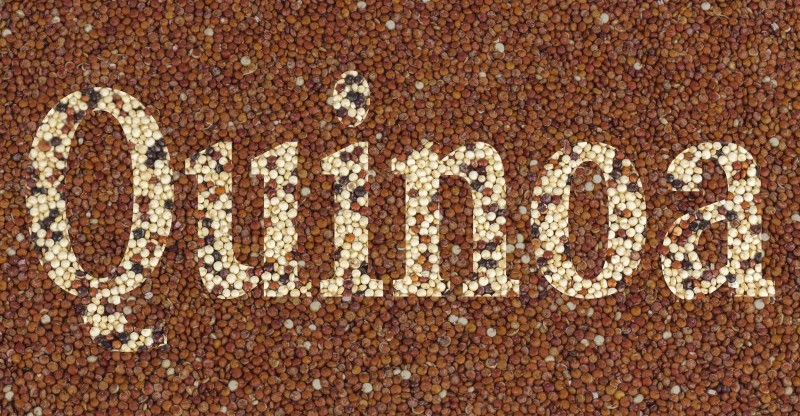






I love quinoa very much and to read such a great article I cannot wait for the recipes! The well-being secrets are included in my anticipation and excitedness.
Hello Roxanne! Thank you a lot! I appreciate your compliments!
Hi dear! I would like to have quinoa as the main ingredient of my weight loss diet!!!Should I eat it for breakfast or maybe dinner???
Hello Emily! You can include quinoa in any meal you’d like 🙂
Thanks for the information. I love quinoa and the recipes with this superfood.
You’re welcome! 🙂
Are all the quinoa types equally good for health?
I am gluten intolerant and quinoa is the best for me. I cook it almost every day, it’s nutritious, healthy, and so versatile! I never get bored as there are so many awesome recipes with quinoa.
Should different varieties of quinoa be cooked differently? Is one type better for salad, for example?
Hello, it’s good to know you didn’t waste your time reading my article:)
Hello! Thank you a lot!
Thank you! That is my goal – to help people providing science-backed information.
Thank you for all this wonderful information! We have health issues (inflamation, clogged arteries, high cholesterol, diabetes, iron deficiency, weight-gain,etc)..and I am Sooooo excited to start using this nutrient PACKED food to re-gain our health. Even just adding a little of it here & there to other dishes will feel really nice, knowing the protein & fiber content will be improved (let alone all the other nutrients…) I am in awe of all of this… a true gift from the heavens!! (and caring people like you) Thank you!!
I love pancakes made from Quinoa. I can only eat one or two, they are very filling.
I just started quinoa, way better than brown rice. It makes you full but it’s not heavy on the stomach like the brown rice, for me atleast. I have fully replaced my rice with quinoa now. Mix it with other veggies, it will taste better.
How do I wash off saponins and use it for my scalp. Just curious if I can do this too? How do I get a picky eater who eats just plain salads, to eat a quinoa salad?
I grow quinoa in Pakistan
It’s safe to use whether you have light or dark skin tone and also whatever your hair
shade is.
Thank you for this information. It was very helpful. I will buy it in bulk from now on, I never gave it a thought to wash it before cooking it. I need to eat it more often.
Hi Helen Nicholas
I hope you are doing great!!
I want to ask can I give it my daughter too.
This is the most complete article I have ever read on quinoa on the internet, or even in a book for that matter. Thanks for your time! Quinoa is scrumptious.